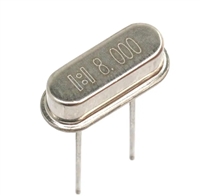LNK64x4-64x8
Key Application Considerations
Output Power Table
LinkSwitch-3 Layout Considerations
Circuit Board Layout
LinkSwitch-3 is a highly integrated power supply solution that
integrates on a single die, both, the controller and the high- voltage
MOSFET. The presence of high switching currents and voltages
together with analog signals makes it especially important to follow
good PCB design practice to ensure stable and trouble free operation
of the power supply. See Figure 5 for a recommended circuit board
layout for LinkSwitch-3.
The data sheet maximum output power table (Table 1) repre- sents
the maximum practical continuous output power level that can be
obtained under the following assumed conditions:
1. Assumes minimum input DC voltage >90 VDC, KP ≥1 (Recom-
mend KP ≥1.15 for accurate CC regulation), η >78%, DMAX <55%.
2. Output power capability is reduced if a lower input voltage
is used.
When designing a printed circuit board for the LinkSwitch-3 based
power supply, it is important to follow the following guidelines:
3. Minimum continuous power with adequate heat sink measured at
50 °C ambient with device junction below
110 °C.
Single Point Grounding
4. Assumes bias winding is used to supply BYPASS pin.
Use a single point (Kelvin) connection at the negative terminal of the
input filter capacitor for the LinkSwitch-3 SOURCE pin and bias
winding return. This improves surge capabilities by returning surge
currents from the bias winding directly to the input filter capacitor.
Output Tolerance
LinkSwitch-3 provides an overall output tolerance (including
line, component variation and temperature) of ±5% for the output
voltage in CV operation and ±10% for the output current during CC
operation over a junction temperature range of 0 °C to 110 °C.
Bypass Capacitor
The BYPASS pin capacitor should be located as close as possible to
the SOURCE and BYPASS pins.
BYPASS Pin Capacitor Selection
A 1 mF BYPASS pin capacitor is recommended. The capacitor
voltage rating should be greater than 7 V. The capacitor’s dielectric
material is not important but tolerance of capacitor should be ≤
±50%. The capacitor must be physically located adjacent to the
LinkSwitch-3 BYPASS pin.
Feedback Resistors
Place the feedback resistors directly at the FEEDBACK pin of the
LinkSwitch-3 device. This minimizes noise coupling.
Thermal Considerations
The copper area connected to the SOURCE pins provides the
LinkSwitch-3 heat sink. A good estimate is that the LinkSwitch-3 will
dissipate 10% of the output power. Provide enough copper area to
keep the SOURCE pin temperature below 110 °C is recommended to
provide margin for part to part RDS(ON) variation.
Cable Drop Compensation
The amount of output cable compensation is determined by the third
digit in the device part number. Table 2 shows the amount of
compensation for each LinkSwitch-3 device.
The output voltage that is entered into PIXls design spreadsheet is
the voltage at the end of the output cable when the power supply is
delivering maximum power. The output voltage at the terminals of
the supply is the value measured at the end of the cable multiplied by
the output voltage change factor.
Secondary Loop Area
To minimize leakage inductance and EMI the area of the loop connecting
the secondary winding, the output diode and the output filter capacitor
should be minimized. In addition, sufficient copper area should be
provided at the anode and cathode terminal of the diode for heat
sinking. A larger area is preferred at the quiet cathode terminal.
A large anode area can increase high frequency radiated EMI.
LinkSwitch-3 Output Cable Voltage
Drop Compensation
Electrostatic Discharge Spark Gap
A spark gap is created between the output and the AC input. The
spark gap directs ESD energy from the secondary back to the AC
input. The trace from the AC input to the spark gap electrode should
be spaced away from other traces to prevent unwanted arcing
occurring and possible circuit damage.
Device
Output Voltage Change Factor (±1%)
LNK640x
LNK641x
LNK642x
LNK643x
LNK644x
1.02
1.04
1.06
1.08
1.01
Drain Clamp Optimization
LinkSwitch-3 senses the feedback winding on the primary-side to
regulate the output. The voltage that appears on the feedback
winding is a reflection of the secondary winding voltage while the
internal MOSFET is off. Therefore any leakage inductance induced
ringing can affect output regulation. Optimizing the drain clamp to
Table 2. Cable Compensation Change Factor vs. Device.
5
Rev. C 03/16
www.power.com






 资料手册解读:UC3842参数和管脚说明
资料手册解读:UC3842参数和管脚说明

 一文带你了解无源晶振的负载电容为何要加两颗谐振电容CL1和CL2
一文带你了解无源晶振的负载电容为何要加两颗谐振电容CL1和CL2

 玻璃管保险丝与陶瓷管保险丝:区别与替代性探讨
玻璃管保险丝与陶瓷管保险丝:区别与替代性探讨

 PCF8574资料解读:主要参数分析、引脚说明
PCF8574资料解读:主要参数分析、引脚说明
